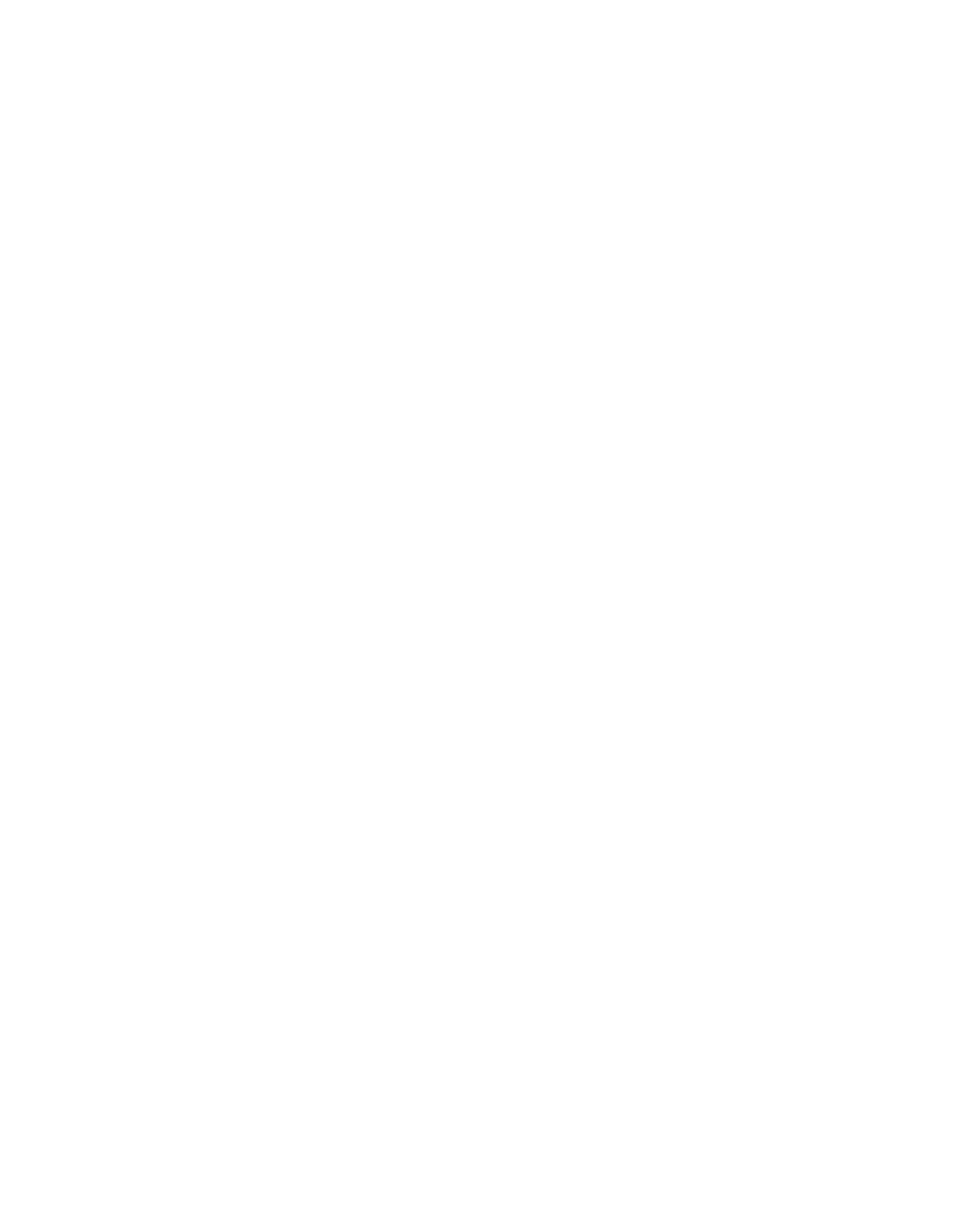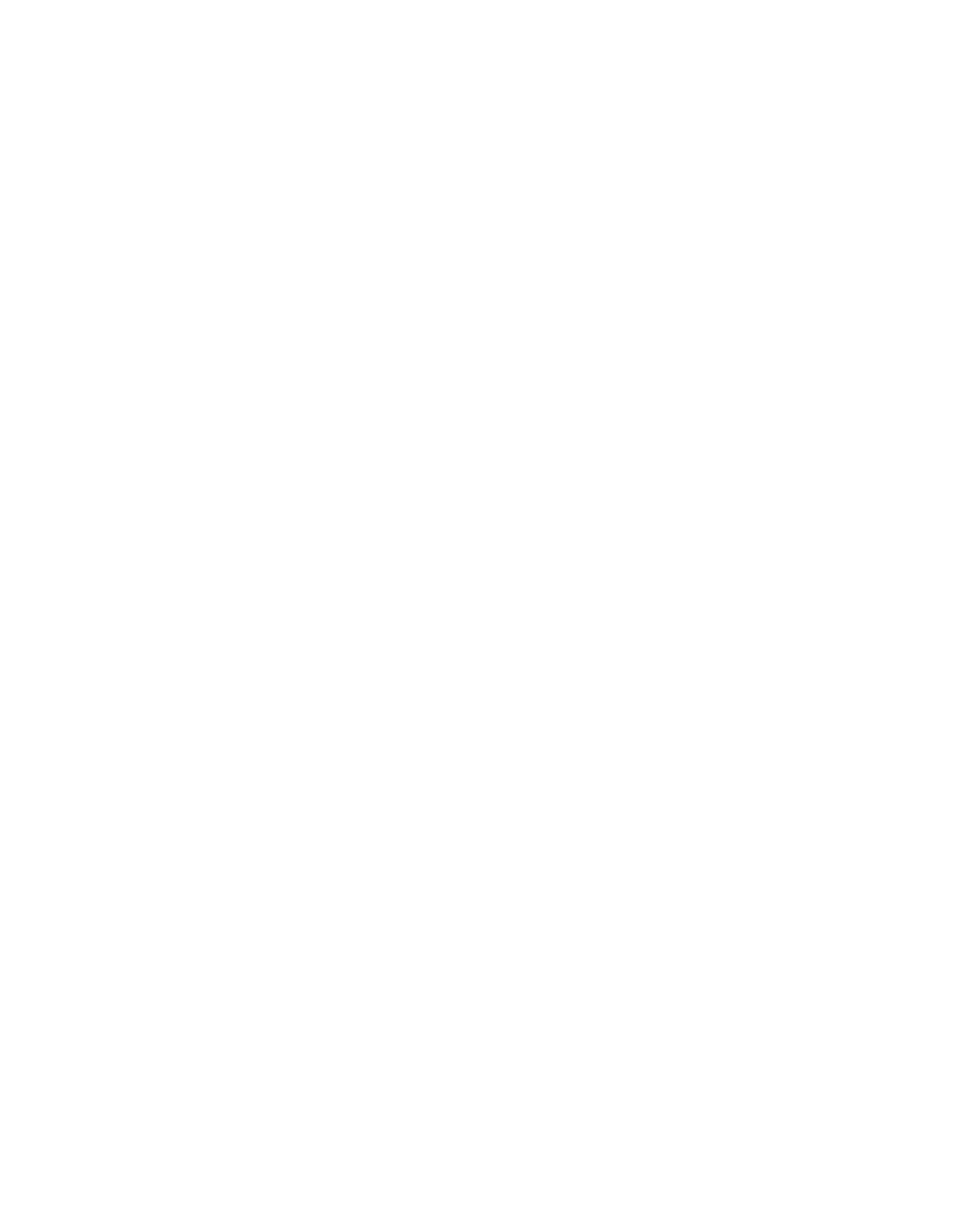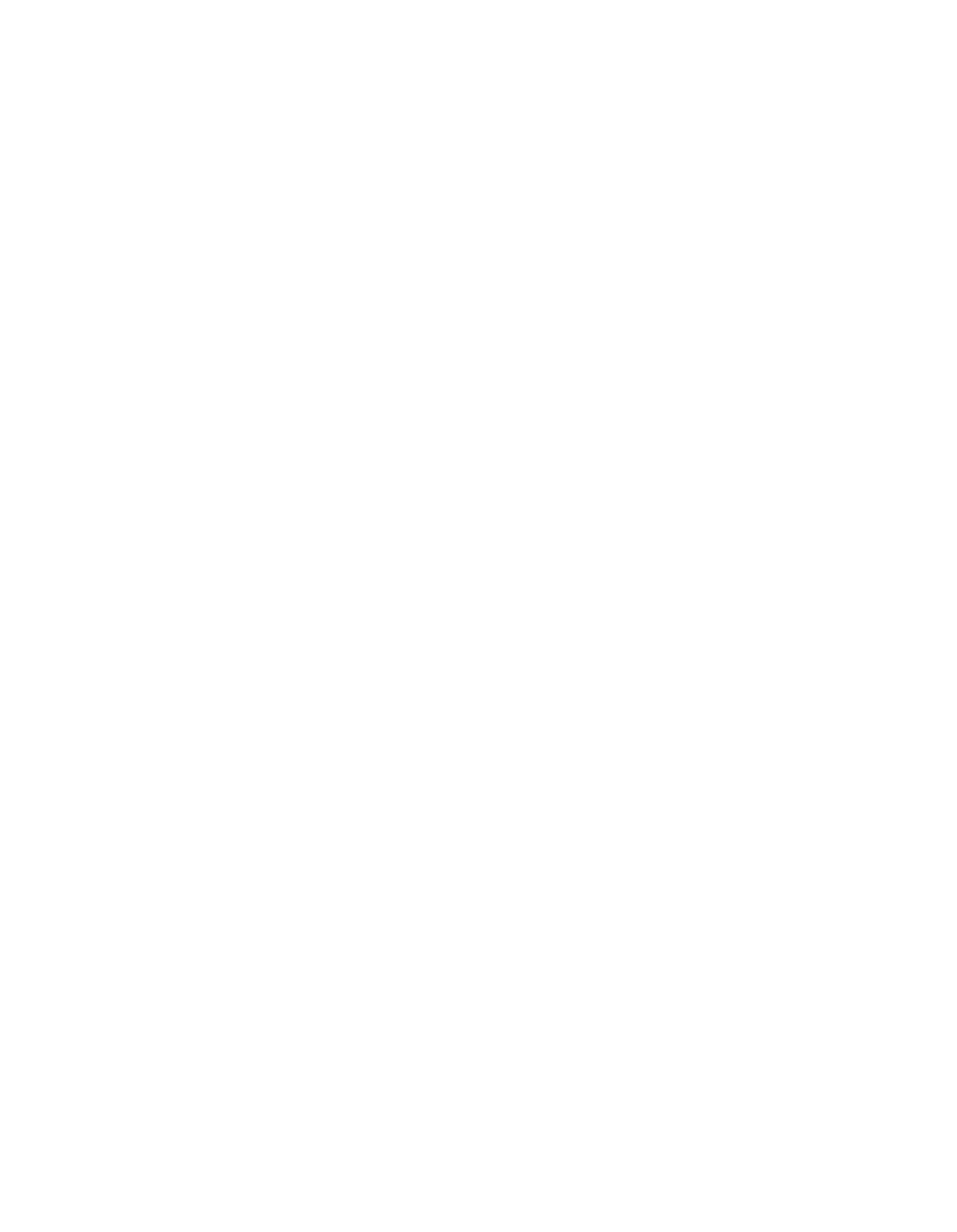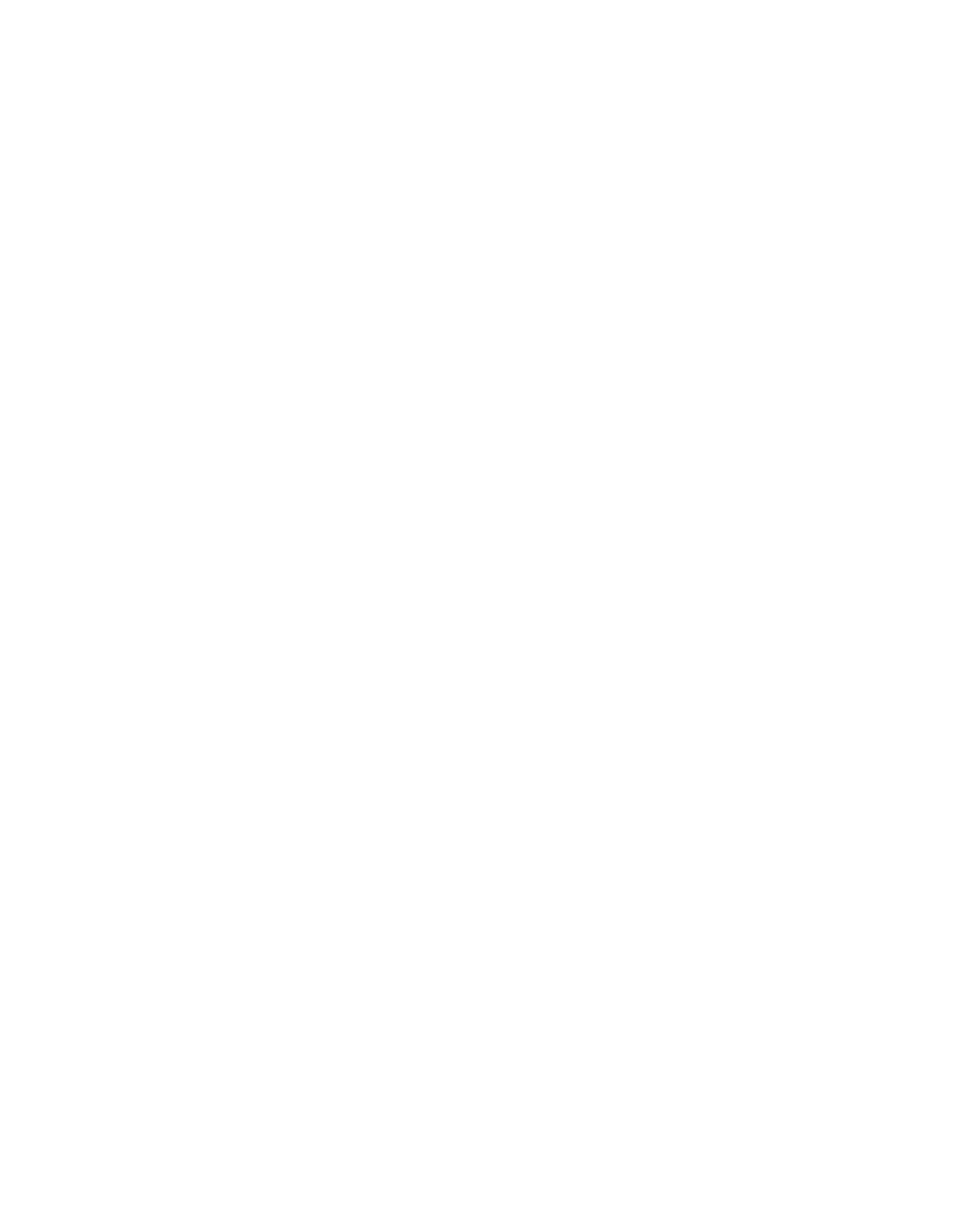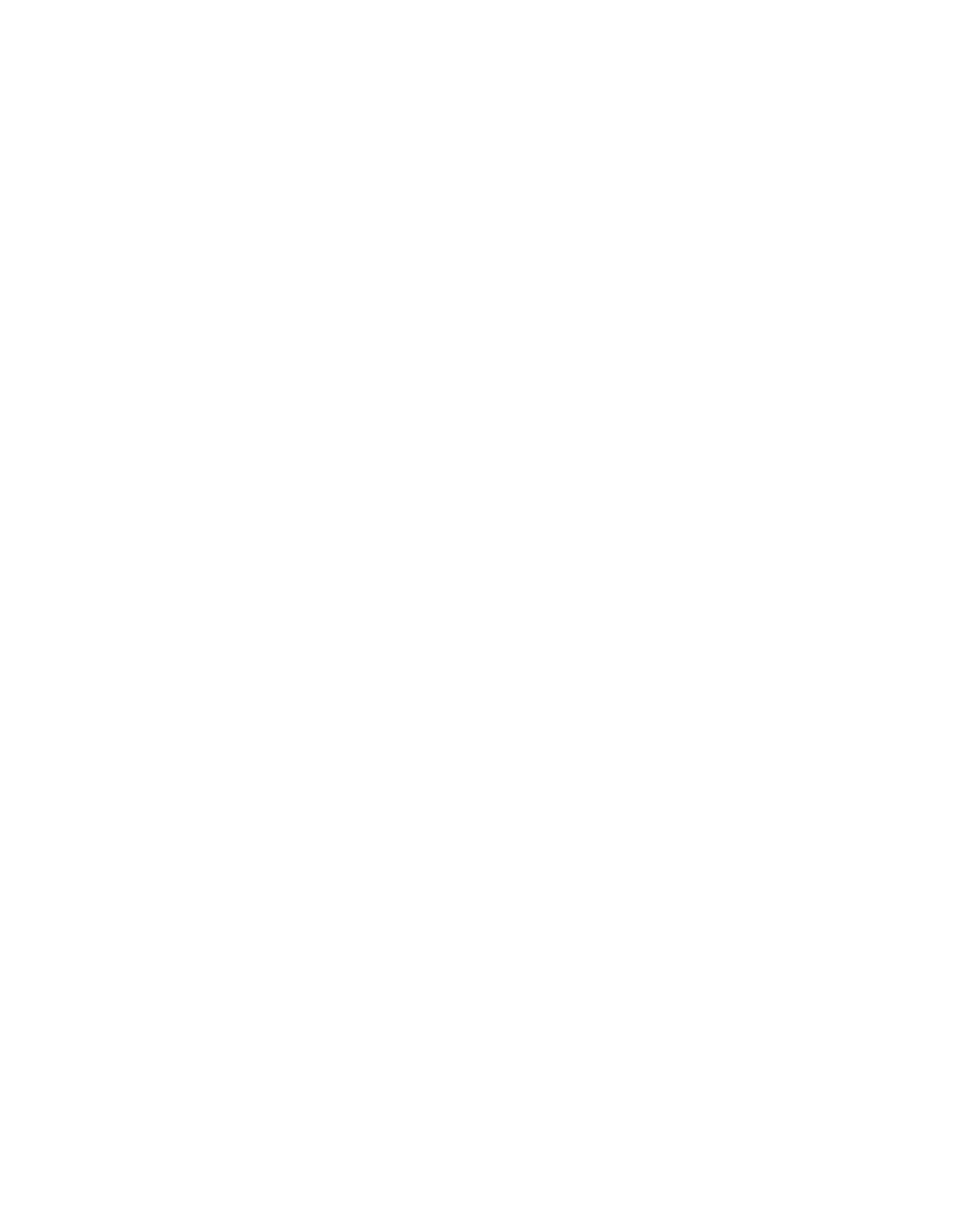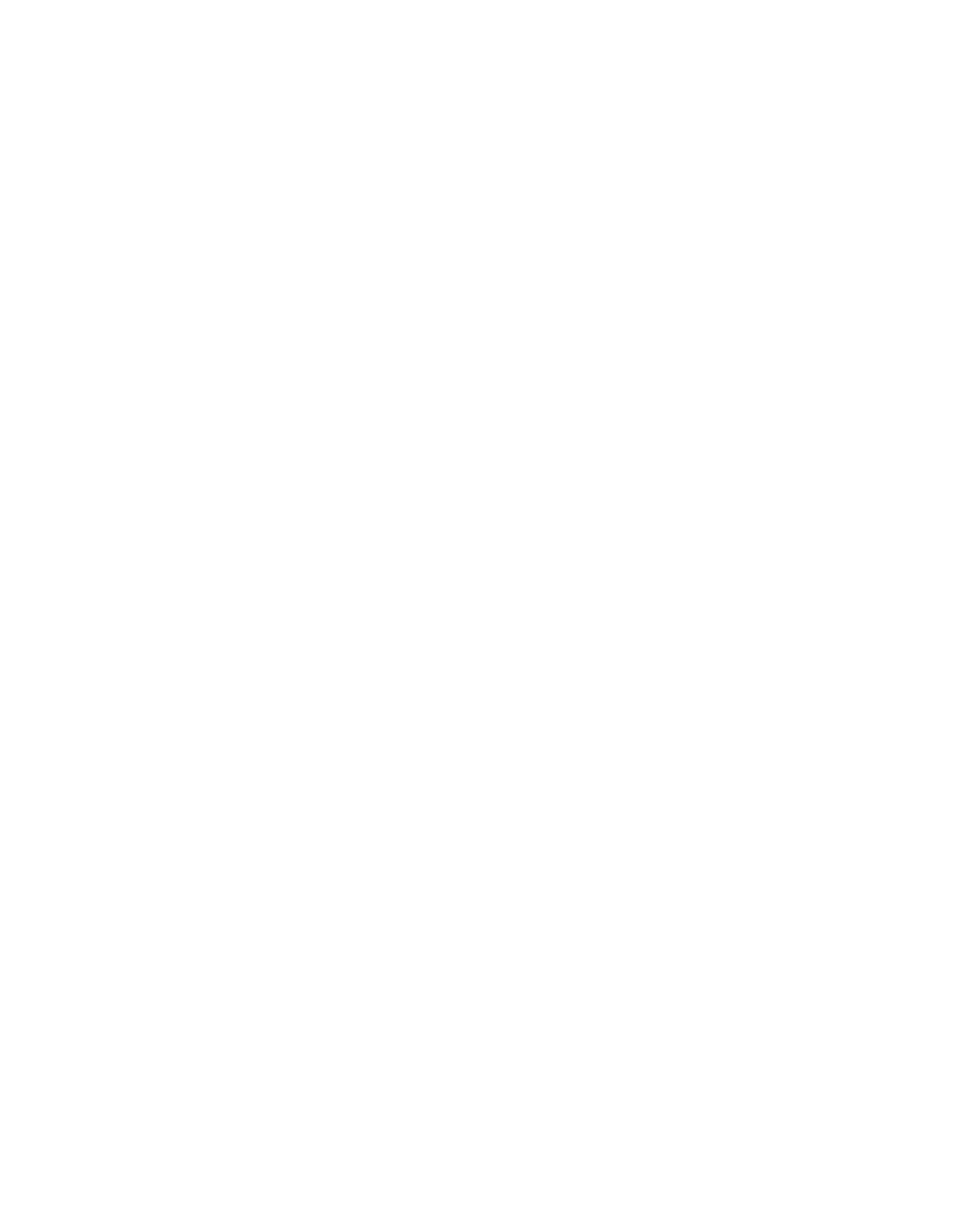ILLINOIS POLLUTION CONTROL BOARD
July 16,
1987
IN THE MATTER OF:
)
RCRA UPDATE, USEPA REGULATIONS
)
R87-5
(10—1—86 THROUGH 12—31—86
)
AND 6-4-87 CORRECTIONS)
PROPOSAL FOR PUBLIC COMMENT
PROPOSED OPINION OF THE BOARD
(by J.
Anderson):
By
a separate Order, pursuant
to Section 22.4(a)
of the
Environmental Protection Act (Act), the Board
is proposing to
amend
the RCRA regulations.
In accordance with the RCRA
procedural
rules
(Section 102.202), the Board invites public
comment
for
45 days after
publication of the proposal
in the
Illinois Register.
On March
19,
1987
the Board
opened this docket
for the
purpose of updating the RCRA rules
to agree with
recent USEPA
amendments.
On May
14,
1987,
the Board proposed amendments.
However, publication of the amendments has been delayed pending
adoption of R86-46.
On July 14,
1987,
Chemical S’~astemanagement
filed
a motion asking
the Board
to redraft the Proposal
to
include corrections
to
the November
7,
1986 Federal
Register,
which corrections appeared on June
4,
1987.
On July
16,
1987,
the Board granted the motion, withdrew the Proposed Opinion and
Order of May 14 and substituted
a modified Proposed Order.
This
Proposed Opinion supports the modified Proposed Order.
Section 22.4 of the Act governs adoption of regulations
establishing the RCRA program
in Illinois.
Section 22.4(a)
provides
for quick adoption of regulations which are “identical
in substance”
to federal
regulations;
Section 22.4(a)
provides
that Title VII
of the Act and Section
5 of
the Administrative
Procedure Act shall
not apply.
Because this rulemaking
is not
subject
to Section
5 of the Administrative Procedure Act,
it is
not subject to first notice
or
to second notice review by the
Joint Committee on Administrative Rules
(JCAR).
The federal RCRA
regulations are found
at
40 CFR 260 through 270,
and 280.
This
rulemaking updates Illinois’
RCRA rules
to correspond with
federal amendments during
the period October
1 through December
31, 1986.
The Federal Registers utilized
are as
follows:
51
Fed.
Reg.
35190
October
1,
1986
51 Fed.
Reg.
37725
October
24,
1986
51
Fed.
Reg.
40636
November
7,
1986
52 Fed.
Reg.
21010
June
4,
1987
(Corrections)
79.859
—2--
During this period the Federal Register also included a
large number
of delistings.
As provided by Section 720.122,
the
Board will not adopt site—specific delistings unless and until
someone proposes that the Board adopt the delisting and
demonstrates why the delisting is necessary in Illinois.
HISTORY OF RCRA and UIC ADOPTION
The Illinois
RCRA
and UIC (Underground Injection Control)
rules, together with more stringent state rules particularly
applicable
to hazardous waste,
include the following:
702
RCRA and UIC Permit Programs
703
RCRA Permit Program
704
UIC Permit Program
705
Procedures for Permit Issuance
709
Wastestream Authorizations
720
General
721
Identification and Listing
722
Generator Standards
723
Transporter Standards
724
Final TSD Standards
725
Interim Status TSD Standards
726
Specific Wastes and Management Facilities
729
Landfills:
Prohibited Wastes
730
UIC Operating Requirements
731
Underground Storage Tanks
Special procedures for RCRA cases are included in Parts
102,
103,
104 and 106.
Adoption
of these rules has proceeded in several stages.
The Phase
I RCRA rules were adopted and amended as follows:
R8l—22
45 PCB 317, February 4,
1982,
6
Ill. Reg.
4828,
April
23,
1982.
R82—18
51 PCB
31., January 13,
1983,
7
Ill.
Reg.
2518,
March
4,
1983.
Illinois received Phase
I interim authorization on May 17,
1982
(47 Fed.
Reg.
21043).
The UIC rules were adopted as follows:
R8l—32
47 PCB
93, May 13,
1982;
October
15,
1982,
6 Ill.
Reg.
12479.
The UIC rules were amended
in R82—18, which
is referenced
above.
The UIC rules were also amended in R83—39:
R83—39
55 PCB 319, December
15,
1983;
7 Ill. Reg.
17338,
December
20,
1983.
79-860
—3—
Illinois received UIC authorization February
1,
1984.
The
Board has updated the UIC rules:
R85—23
June 19,
1986;
10
Ill. Reg.
13274, August
8,
1986.
R86—27
Dismissed April 16, 1987
(No USEPA amendments
through 12/31/86).
The Phase II RCRA rules
included adoption of Parts 703 and
724, which established the permit program and final TSD
standards.
The Phase II rules were adopted and amended as
follows:
R82—l9
53 PCB 131, July 26,
1983,
7
Ill. Reg.
13999,
October
28, 1983.
R83—24
55 PCB
31, December 15,
1983,
8 Ill. Reg.
200,
January
6,
1984.
On September
6,
1984, the Third District Appellate Court
upheld th&Board’s
actions in adopting R82—l9 and R83—24.
(Commonwealth Edison et al.
v.
IPCB,
127
Ill. App.
3d 446; 468 NE
2d 1339
(Third Dist.
1984).)
The Board updated the RCRA rules to correspond with USEPA
amendments
in several dockets.
The period of the USEPA rules
covered by the update
is indicated in parentheses:
R84—9
64 PCB 427,
June
13,
1985;
9
Ill.
Reg. 11964,
effective July 24,
1985.
(through 4/24/84)
R85—22
67 PCB 175,
479, December 20,
1985 and January
9,
1986;
10 Ill.
Reg.
968, effective January
2,
1986.
(4/25/84
——
6/30/85)
R86—l
July 11,
1986;
10
Ill.
Reg.
13998, August
22,
1986.
(7/1/85
——
1/31/86)
R86—l9
October
23,
1986;
10 Ill. Reg.
20630, December
12,
1986.
(2/1/86
——
3/31/86)
R86—28
February
5
and March
5,
1987;
11
Ill. Reg.
6017,
April
3,
1987.
Correction April 16,
1987;
11
Ill.
Reg. 8684, May
1,
1987.
(4/1/86
——
6/30/86)
R86—46
Proposed March
19,
1987;
11
Ill.
Reg. 7145, April
17, 1987.
(7/1/86
——
9/30/86)
R87—5
This Docket.
(10/1/86
——
12/31/86)
Illinois received final authorization for the RCRA program
effective January
31,
1986.
79.861
—4—
The Board added
to the federal listings of hazardous waste
by listing dioxins pursuant to Section 22.4(d) of the Act:
R84—34
61 PCB 247, November 21, 1984;
8
Ill. Reg.
24562,
effective December 11,
1984.
This was effectively repealed by R85—22, which
included
adoption of USEPA’s dioxin listings.
The Board has adopted
a
tJSEPA delisting
at the request of Amoco:
R85—2
April
24,
1986;
10
Iii. Reg.
8112,
effective May 2,
1986.
The Board has procedures to be followed
in cases before
it
involving the RCRA rules:
R84—lO
62 PCB 87,
349, December
20,
1984 and January 10,
1985;
9
Ill.
Reg.
1383, effective January 16,
1985.
The Board
also adopted
in Part 106 special procedures to be
followed in certain determinations.
Part 106 was adopted
in R85—
22, which
is listed above.
Part 106
is proposed for amendment in
R86—46,
also listed above.
The Board
has also adopted requirements limiting and
restricting the landfilling
of liquid hazardous waste,
hazardous
wastes containing halogenated compounds and hazardous wastes
generally:
R8l—25
60 PCB 381, October
25,
1984;
8 111.
Reg.
24124,
December
4,
1984;
R83—28
February 26, 1986;
10 Ill. Reg.
4875, effective
March
7,
1986.
R86—9
Emergency rules adopted October
23,
1986;
10
Ill.
Reg.
19787, effective November
5,
1986.
The Board’s action
in adopting emergency rules
in R86—9 was
reversed
(CBE and IEPA v.
IPCB et al., First District, January
26,
1987).
DETAILED DISCUSSION
The USEPA amendments involved in this update are summarized
as follows:
51 FR
1986
35190
October
1
Waste minimization certification
37725
October 24
Listing of ethylenebisdithiocarbamic
acid
40636
November
7
Land disposal restrictions
79.862
—5—
Almost all
of the amendments result from the November
7 land
disposal restrictions,
and from the June 4,
1987 ~corrections
noted
above.
Section 721.132 and
two appendices are amended
as
a
result of the October
24 listings.
The waste minimization
certification affects only the manifest form,
which the Agency
promulgates without
a specific Board regulation.
Because the proposal would
amend
the still-pending R86—46,
part of
the verbatim amendments must await final adoption of R86-
46.
Therefore,
the Proposed Order includes only
a summary of the
amendments to Parts
702 through
725.
New Part 728
is set out
in
full.
The full amendments will appear
in the Illinois Register.
Section 702.187
This Section
is drawn from 40 CFR 270.42(o),
which was added
at
51 Fed.
Reg.
40636.
The amendments
add a new type of “minor
modification”
of
a
RCRA
permit
which
the
Agency
can
grant
without
following the full Part 705 procedures.
The Agency can so modify
a permit
to allow treatment
of restricted wastes
in accordance
with Part 728 treatment standards or
an adjusted standard
approved by the Board.
However, the minor modification route
cannot be used to approve changes
in processes or physical
equipment.
Incorrect references
in the USEPA rule to
40 CFR 268 have
been corrected.
In addition,
40 CFR 270.42(o) (4)
has been
reworded
for clarity.
Section 703.183
This Section
is subject
to amendment
in R86-46.
This
Section
is drawn from 40 CFR 270.14(b)(21), which was added
at 51
Fed.
Reg.
40636.
The applicant has
to include copies of any
extensions
or adjusted standards from Part 728 with
the permit
application.
Section 703.241
This Section
is drawn from 40 CFR 270.32(b)(l), which was
amended
at
51
Fed.
Reg.
40636
to add references
to Part 268.
Section 720.101 through 721.130
Several Sections have been amended
to add references
to new
Part
728.
Several
of these Sections are subject
to amendment in
R86—46.
These
are drawn from 51
Fed.
Reg.
40636.
40 CFR 260.1(b) (1) and
(b)(4) have
no counterparts
in
Section 720.101.
The references at
51
Fed.
Reg. 40636
to 40 CFR
26l.7(a)(1)(ii)
and
(a)(2)(ii)
appear
to be incorrect.
The Board
has interpreted
these
as the equivalents of Section 72l.l07(a)(l)
and
(2).
79.863
—6—
Section 721.132
This Section
is subject to amendment in R86—46.
This
Section
is drawn from 40 CFR 261.32,
which was amended at 51 Fed.
Reg.
37725,
to add listings K123 through K126.
These are related
to production of ethylenebisdithiocarbamic acid,
a pesticide
precurser.
Section 721, Appendices C and G
The incorporation by reference
of the test methods has been
updated to include testing for ethylenebisdithiocarbamic acid.
The basis for listings K123 through K126 has been identified as
the presence of ethylene thiourea.
Section 722.111
This,
and all the following Sections, are drawn from 40 CFR
262.11(d), which was added
at 51 Fed. Reg.
40636 to reference new
40 CFR 268.
This has been reworded for clarity.
Section 722, Appendix
This Section
is subject to amendment in R86—46.
40 CFR 262,
Appendix is the uniform hazardous waste manifest form.
In
Illinois,
as provided by Section 722.120,
the Agency promulgates
manifest forms based on the USEPA form.
The Agency will include
the generator certification of waste minimization
in the form
without
a specific Board rule.
Section 723.112
This Section has been amended
to include references
to Part
728.
Section 724.101
This Section was amended with the June 4,
1987
corrections.
Subsection
(h) makes
it clear that the facility
standards apply to people managing waste
regulated under Part
728.
Section 724.113
Sections 724.ll3(a)(1) and
(b)(6) have been amended
to
include references to new Part 728.
This Section was amended
with the June
4,
1987 corrections.
Section 724.ll3(b)(7) has
been added
to include analyses required by Section 728.104 for
lagoons exempt from land disposal restrictions.
40 CFR 264.13
(a)(l)
includes an apparent typographical error which
the Board
has corrected:
“...
this part of Part 268...” has been
interpreted as
“this Part
or
35
Ill.
Adin.
Code 728.”
79-864
—7—
Section 724.173
This Section is subject
to amendment
in R86—46.
Section
724.173(b) (10)
through
(14) have been added.
These require that
various notices required under Part 728 be placed
in the TSD
facility’s operating record.
This Section was amended with the
June 4,
1987 corrections.
The amendments correct minor
typographical errors.
40 CFR 264.73,
and 265.73, contain what appears to be a
consistent error.
They make repeated reference to “the notice
required by the generator”
under various provisions of
40 CFR
268.
However, these provisions require that the generator
prepare
a notice
to send with the waste
to the TSD facility.
Accordingly, the Board has rendered these as “the notice required
of the generator.”
Section 725.101
This Section was amended with the June
4, 1987
corrections.
Subsection
(e) makes it clear that the interim
status standards apply to people managing wastes regulated under
new Part 728.
Section 725.113
This Section
is subject
to amendment
in R86—46.
This
is the
same as Section 724.113, only
it applies
to interim status
facilities.
Section 725.173
This Section
is subject
to amendment
in R86—46.
This is the
same as Section 724.173.
The added Sections are numbered
(b)(8)
through
(12).
Section 728.101
The following Sections are drawn from 40 CFR 268.
They were
added at
51 Fed.
Reg.
40636, November
7,
1986.
This
is USEPA’s
land disposal ban.
This Section was amended with the June
4,
1987
corrections.
The amendments correct minor typographical
errors.
The amendments correct grammer
in the sequential
listings.
The amendments to subsection (c)(4)
add an exemption
for
persons generating less than one kilogram of acute hazardous
waste per month.
40 CFR 268,
Subpart B was adopted by USEPA at
51
Fed. Reg.
19305, May 28,
1986.
Subpart
B is the schedule USEPA intends
to
follow
in promulgating
its land disposal bans.
The Board
declined to adopt
the schedule
in R86—28.
79.865
—8--
Section 728.101 defines the purpose, scope and applicability
of the USEPA land disposal bans.
Subsection
(d)(3)
exempts
CERCLA and RCRA corrective action wastes until November,
1988.
The Board has defined “CERCLA” and
“RCRA
corrective action”
below.
The Board has land disposal restrictions which were adopted
in R8l—25 and in R83—28.
35 Ill.
Adm. Code 709, and Sections
22.6 and 39(h)
of the Act, require wastestream authorizations,
while 35
Ill.
Ac3m.
Code 729 includes standards under which
halogenated solvents and liquids can be disposed.
The Board has
added subsection
(d)
to state the relationship to Parts 709 and
729.
Parts
728 and 729 are cumulative:
a waste must meet the
requirements of both Parts before the Agency can issue a
wastestream authorization.
Section 728.102
This Section includes specialized definitions.
The Board
has added definitions of “Agency,” “Board,”
“CERCLA” and “USEPA,”
abbreviated names which are used
in the text.
This Section was amended with the June
4,
1987
corrections.
The exclusions have been removed from the
definition of “land disposal.”
The Board has also defined
“RCRA
corrective action,”
a term
which is used
in Section 728.lOl(c)(3)
and
in other places in
reference
to the temporary exemption for clean—up waste.
The
definition references the Board’s corrective action provisions
in
35
Ill. Adm. Code 724 and 725 and the comparable USEPA
rules.
In
addition, the definition includes wastes produced under RCRA
corrective action pursuant to authorized RCRA programs
in other
States.
Section 728.103
This Section prohibits dilution as
a substitute
for
treatment.
Section 728.104
This Section exempts treatment
in surface impoundments from
the land disposal ban.
The operator has
to demonstrate that
treatment occurs
in the lagoon,
and has
to analyze both the
supernatent and sludge to show that they meet any treatment
standards.
This Section was amended with the June
4, 1987
corrections.
The amendments correct minor typographical
errors.
The amendments correct grammer
in the sequential
listings.
The introductory language
is now worded to say that
treatment is allowed
in impoundments, rather
than to exclude the
treatment from the Part.
79.866
—9—
The lagoon exemption applies only to surface impoundments
which have double liners,
or which are exempted under one of
three other provisions
(Section 728.l04(c)(l)
-
(3)).
The first
is one of the exemptions from the double liner requirement for
new impoundments found
in Sections 724.321
or 725.321.
The
second
is
for
an unleaking, lined lagoon with groundwater
monitoring which
is located more than a quarter mile from an
“underground source of drinking water.”
The third requires a
demonstration of “no migration of any hazardous constituent
into
groundwater or surface water at any future time.”
These exemptions raise questions as to whether Board
or
Agency action
is required.
With respect to the first,
the
determination will
be made
as provided
in Part 724
or
725.
Some
of these are
to be made by the Board,
and others by the Agency.
The Board has not proposed
to disturb these provisions,
which
were last amended
in R86—l.
~ith respect to the second,
the Board has provided that
the
determination
is
to be made by the Agency by way of permit action
(Section 728.l04(c)(2)).
The
rule includes standards which
the
Agency can apply
in the context of permit issuance, subject
to
review by the Board.
As proposed, interim status
facilities will
have
to make a Part B application to obtain this exemption.
The third exemption
is the demonstration of no migration at
any future
time.
This
is similar
to Section 724.321(e)(2)(B),
with respect
to lagoons
in general, which
is to
be made by the
Board.
The Board will make this determination also.
The similarity of Section 724.32l(e)(2)(B)
to
Section
728.104(c)(3) raises another possible question of
interpretation.
As worded,
these
seem
to be different,
but
similar determinations.
The former demonstration, which would be
made
to the Board
in
a site-specific rulemaking,
would allow
construction of
an unlined monofill surface impoundment.
The
latter, wnich would
be made through an
adjusted standard, would
allow placement of specific wastes
in any impoundment.
This is
the interpretation the Board
gives
the USEPA rules.
An
alternative
interpretation is that these provisions are intended
to
be linked,
so that
the Section 728.l04(c)(3) adjusted
standard
would be
available only to the monofills exempted under Section
724.32l(e)(2)(B).
The Board
solicits comment on this.
The June
4 corrections
to Sections 728.l04(c)(2)
and
(c)(3)
add
a requirement
of notice
and comment before USEPA acts on
these waivers and adjusted standards.
The Board approach of
placing
these decisions within the permit issuance and adjusted
standards procedures accomplishes the same result.
Section 728.104 has
a number
of editorial problems.
First,
40 CFR 268.4 has a
subsection
(a), but
no subsection
(b).
This
is not allowed under
Illinois codification rules.
It
is necessary
to promote each level
of subdivision
in forming the
Illinois
79.867
—10—
rule,
so
that
40
CFR 28.4(a)(l) corresponds with 35 Ill.
Adm.
Code 728.104(a).
This violates the simple correspondence rule
which exists within virtually all
of Parts 720
—
726,
and
complicates cross referencing this Section.
Second,
the introductory language of
40 CFR 268.4(a)(3)
seems to be missing an essential verb.
This is amended with the
corrections, but not fixed.
The Board has added
“is”
to make it
clear
that a condition
is that the impoundment “is
in compliance
with applicable groundwater monitoring
requirements.”
The USEPA
rule seems
to say
:
“regardless that the unit may not
...
be
in
compliance with applicable groundwater monitoring requirements,”
an unlikely, but grammatically correct,
interpretation.
Third,
the introductory language also repeats a reference to
40 CFR 264, where
265
is probably intended the second
time.
Fourth,
40 CFR 268.4(c)(l) needs
a verb which
the Board has
supplied.
Section 728.105
Rather than adopt
an equivalent
to the text of
40 CFR 268.5,
the
Board
has
referenced
the
USEPA
procedure
for
extensions
of
the
effective
date,
and provided that any extensions granted
by
USEPA will
be deemed extensions of any dates specified by Board
rule.
This appears
to be what USEPA intended
in the discussion
at
51
Fed.
Reg. 40618,
although
it would be
helpful
if USEPA had
specified
what
Sections
it
was
talking
about
and
had
been
consistent within the the rules and discussion as to the names of
the procedures.
It
is conceivable that there exists
a class
of
site-specific extensions which USEPA intends the Board
to grant,
and
that
there
may
be other
types
of exemptions
in
40 CFR 268
which USEPA intended
to retain.
The Board solicits comment on
this.
The Board has concluded
that USEPA intended that the States
not adopt the procedures of 40 CFR 268.5 which allow extensions
of compliance dates.
tJSEPA
is specific
as
to the need
for
national
uniformity on extensions.
The Board
concludes that
USEPA intended
to preempt the States should they adopt
a date
which
is subsequently extended.
The Board has therefore provided
that USEPA extensions will automatically preempt any derivative
Board
rule.
The Board will adopt the extension when it updates
the
rules
in
the ordinary course
of events.
However, the
extension
will
have
already become automatically effective.
This
Section
was
amended
with
the
June
4,
1987
corrections.
The Board has incuded the amendments
in the
incorporation
by
reference.
The earlier version of the Proposal
referenced 40 CFR 268.5
in the text of other Sections.
The Board has revised the
Proposal
to reference Section 728.105, which
is the incorporation
79.868
—11—
by reference of 40 CFR 268.5.
The earlier approach would have
necessitated a major revision of this Part to update the
incorportions
each
time
USEPA
amended
40
CFR
268.5.
Section 728.106
This Section allows
a site—specific exemption from the land
disposal bans of Subpart C on
a demonstration of “no migration of
hazardous constituents
...
for
as long as
the wastes remain
hazardous.”
This is similar
to the demonstration of Section
724.321(b), which must be made by the Board.
The Board has
proposed to utilize the adjusted standards procedures of Part
106, adopted
in R86—46,
as the mechanism for making this
decision.
This exemption will be dealt with as an adjustment of
the treatment standard set
in Subpart
C.
40 CFR 268.6(b)(2)
and
(4)
require USEPA to approve sampling
and quality assurance plans for demonstrations.
There are two
ways
to
interpret
these.
First,
this
might
mean
that
the
sampling and quality assurance plans have to meet USEPA rules and
guidance
documents
for
the
exemption
to
be
granted.
Second,
this
could mean that USEPA
is to approve the specific plans prior to
submission of the petition.
The Board has construed this rule in
the latter manner.
Because the Board lacks
a mechanism for
giving informal approval, the Board has modified the procedure to
provide specifically,
in Section 728.106(a)(l), that the adjusted
standards procedure is initiated by the filing
of
a petition for
approval
of
the
sampling
and
quality
assurance
plans.
This
should be done before the generator undertakes the sampling
required for the demonstration
in the main petition.
The Agency
will have the opportunity to review the plans and raise
objections prior
to approval.
The main petition will be rejected
if
the generator does not follow the approved plans.
There is a basic question as
to whether the above
interpretation is correct.
If USEPA intended the former
interpretation,
that
the
sampling
and
quality
assurance
plans
just have
to meet its rules or guidance documents,
the rule will
have
to be made more specific.
The Board solicits comment on
this.
This exemption could be compared to the “economically
reasonable and technically feasible”
(“ERTF”) demonstration to
the Agency under
the liquids and general hazardous waste bans
in
Illinois.
The “no migration”
standard of
the USEPA rule does not
fit into the ERTF showing;
rather,
they are independent
exemptions.
Note
that
under
Section
728.101
the
“no
migration”
exemption
would
apply only to the USEPA bans, and the ERTF
showing
would
apply only to the Illinois Part 729 and statutory
bans.
This
Section
was
amended
with
the
June
4,
1987
corrections.
The amendments correct minor
typographical
errors.
79.869
—12—
Section 728.107
The generator has to determine whether
a waste
is
restricted.
If he determines that he is managing a restricted
waste, he has to attach various certifications to the manifest
before shipping.
This Section was amended with the June 4,
1987
corrections.
Several provisions have been reworded to correct
errors which were discussed in the earlier Proposed Opinion.
The
amendments also correct minor typographical errors.
Section 728.130
Subpart C contains the USEPA prohibitions on land
disposal.
Section 728.130
is the prohibition of solvent
wastes.
This
is comparable
to the
35 Ill.
Adm. Code 729 rules on
halogenated solvents which were adopted by the Board
in R8l—25.
40 CFR 268.30(b) contains an apparent typographical error
which the Board has corrected.
The USEPA rule includes
a
temporary rule which appears to apply only if three conditions
are met.
“Or” is probably intended, since
some of the conditions
are mutually exclusive.
This Section was amended with the June
4,
1987
corrections.
The amendments correct grammer
in the sequential
listings.
The correction
to Section 728.l30(c)(3)
is ambiguous,
and may merit close attention.
Section 728.131
This
is USEPA’s restriction on land disposal of dioxin
containing wastes.
This Section was amended with the June
4,
1987 corrections.
The amendments correct grammer
in the
sequential listings.
The ~amendmentsadd F022 to the list of
wastes.
Section 728.140
Subpart D
includes treatment standards.
Residuals from the
treatment of restricted wastes can be land disposed
if they meet
a treatment standard.
Treatment standards are either expressed
as a concentration of constituents
in the waste extract,
or by
specification of
a treatment method.
This Section was amended with the June 4,
1987
corrections.
The amendment distinguishes wastes and treatment
residuals.
Section 728.141
40 CFR 268, Appendix
I specifies an extraction procedure for
treatment residuals.
A residual
from treatment of
a restricted
79.870
—13—
waste may be land disposed
if its extract meets these
standards.
The constituents
for which standards are included are
solvents and dioxin—related compounds.
It would be difficult to place the USEPA table in the Board
rule and comply with codification requirements.
The Board has
therefore made the table a “Table,”
a type of Appendix, which
will
be referenced in the rule.
Section 728.142
This Section will specify certain treatment technologies,
the
residuals
of
which
can
be
land
disposed.
No
technologies
are
presently specified.
Subsection
(b)
allows the Agency to approve alternative
treatment technologies
if they “achieve a level
of performance
equivalent to that achieved by methods specified.”
This appears
to be an objective standard which the Agency can apply
in the
context of permit issuance, subject to review by the Board.
The
Board solicits comment as to whether there is
a need of a
mechanism for persons who might not fall within the permit
requirement,
for example persons with interim status or exempt
units.
Section 728.144
40 CFR 268.44 provides for “variances” from treatment
standards where the petitioner demonstrates that “because the
physical or chemical properties of the waste differ significantly
from wastes analyzed
in developing the treatment standard, the
waste cannot be treated to specified levels or by the specified
methods.”
This differs from Section 728.142(b)
in that the
former
is available even
if the operator can use the specified
treatment, while the latter does not require treatment to the
specified level.
The Board’s variance procedures are not appropriate for this
determination.
Board variances require
a showing of individual
hardship as well
as
a compliance plan, and grant only temporary
relief.
The Board has deleted the word “variance”
to avoid
confusion with the
35
Ill. Adm. Code 104 variance procedures.
This procedure
is adjustment of an environmental control
standard set by Board
rule.
The Board will utilize the Part 106
adjusted standards procedures adopted
in R86—46 to grant these
“variances.”
This Section was amended with the June
4,
1987
corrections.
The certification of Section 728.144(c) has been
added.
79.871
—14—
Section 728.150
This Section prohibits storage of restricted wastes except
incident to transportation or for accumulation of sufficient
quantities
as necessary to facilitate proper recovery, treatment
or disposal.
There
is
a presumption that storage for over one
year
is not necessary.
This Section was amended with the June 4,
1987
corrections.
Storage has to be in tanks and containers, which
are dealt with separately.
The amendments correct grammer
in the
sequential listings.
Table A
This
is the table of maximum concentrations of solvents and
dioxins
in the waste extract.
Because of possible codification
problems,
it has been removed from Section 728.141 and made
a
separate table.
This Section was amended with the June
4,
1987
corrections.
The amendments correct minor typographical
errors.
Appendices
The Board will incorporate
the Appendices by reference
instead of setting them out
in full.
Appendix A references the
method
for testing the waste extract.
Appendix
B references
the
treatment methods used to achieve the treatment standards.
The
Board has included the June
4,
1987 corrections
in the
incorporation by reference.
This Proposed Opinion supports the Board’s Proposed Order
for public comment of this same day.
IT IS SO ORDERED.
I, Dorothy M.
Gut-in, Clerk of the Illinois Pollution Control
Board,
hereby certify
t
t ~he above Proposed Opinion was ,adopted
on the /~~~day
of
_____________,
1987, by a vote of
~
/6~L~z.~
i2~.
,4L~
Dorothy M. Gt~nn, Clerk
Illinois Pollution Control Board
79.872


